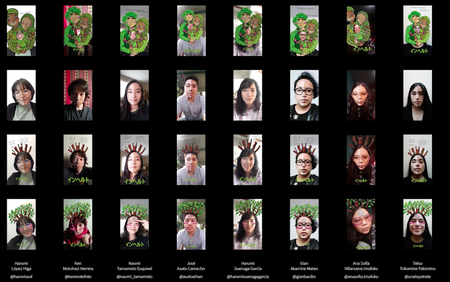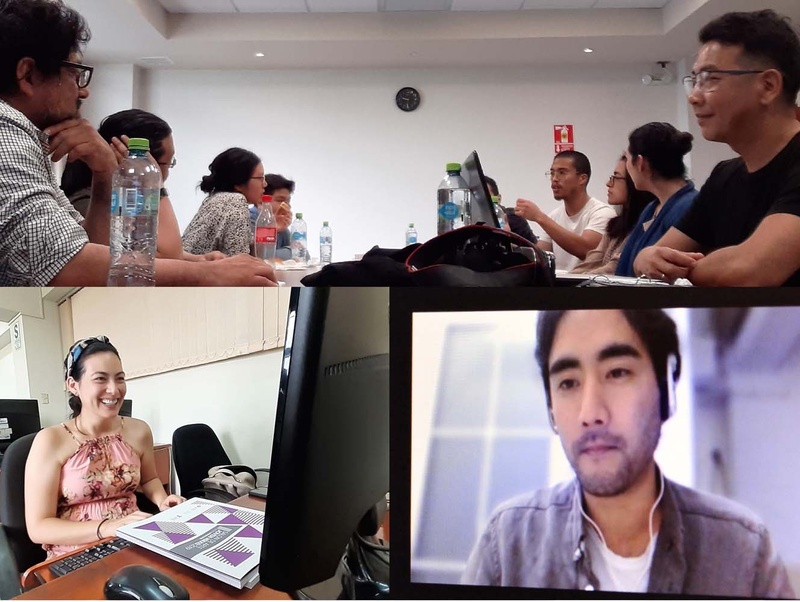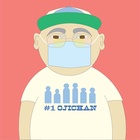An empty wall is endless possibilities. This is how the plastic artist and cultural manager Haroldo Higa sees it, in less metaphorical terms, who has built a wall, concrete and at the same time virtual, for young artists of Japanese descent with the Nikkei Young Art Salon, which every year brings together sculptors, designers, draftsmen, ceramists, visual artists and other creators to reflect on their identity and their work.
“Bringing young Nikkei artists closer to each other, so that they recognize each other and little by little create, in a natural, collaborative way, the idea of a community of artists with their own projects,” says Haroldo, who seeks to make them more active in the community. Japanese Peruvian and its institutions; in addition to giving them another space for expression so that “artists are able to express their Nikkei identity from their own experiences, freely, revealing new stories and stories of their own.”
The goal has been achieved and in the 4th Nikkei Young Art Salon, experiences have been brought together that seek to address the reduction in interactions caused by the quarantine, which in Peru will be one year old in March with theaters and cultural centers closed . An especially hard year for artists and other cultural protagonists in Peru. Listening to them helps to understand their experiences and what they rescue from this period where they have been able to remain creative.
Tach Maeshiro Watanabe, designer
When he thinks about his Nikkei heritage, the first thing he remembers is his family, his childhood, and his home. The most everyday elements of those who feel that they grew up in a bubble that, little by little, they left to obtain the traits of their own identity. “My mom ended up convincing me to study graphic design at an institute, something they thought would be more 'productive'. I completed the first cycle and made the decision to go to Japan to work, my father was there for many years as a dekasegui,” recalls Tach.
That experience was important for him because he learned about work and discipline. Two years later he returned to resume his studies and began working in advertising as an art director, but his mother's illness made him rethink his life and he became a freelancer. “That's how I returned to drawing, exploring design in a personal way, going back to studying and leading workshops. When she died, I applied for the APJ visual arts program for the 120 years of immigration. "I didn't think I would be selected."
In 2019, Tach Maeshiro Watanabe presented “ Un Typo Nikkei ”, which starts from the letters of the alphabet to graph everyday emotions, thoughts and concepts of Nikkei families. Typography, through engraving, folk signs, and shodo, became an expressive complement to his words. “The title of the exhibition addressed typography, at the same time the word 'typo' had a connotation of difference and error. The process was always trial and error, with small family stories and Nikkei characters that influenced my identity.”
In the series he developed for the Nikkei Young Art Salon he delved into his memory in a more incisive way. “It brought me closer to the possibility of seeing myself in the other's shoes, connecting it with memory, understanding the historical processes through which we find ourselves going through migration. Experimenting with engraving was a great challenge due to the format, the figures represented what we inherited and whose origin we often do not know. The final work became a collage of the scraps of the paper tests that I made.”
Tetsu Tokumine Palomino, industrial designer
He uses the word hafu to summarize the parts that make up his identity. On his mother's side are his grandparents from Ayacucho, who migrated to Ica and thanks to whom he grew up listening to and dancing huayno. “Thanks to my maternal family, I am devoted to Peruvian culture, its music and dances.” On his paternal side, his Okinawan grandparents migrated to Lima. “Both my father and other members of his family loved to draw and paint, from my father's family I have inherited the same taste.”
This mixture has given him an introverted and extroverted character, at the same time, which reflects his work. “As I grew up I have captured both worlds, which I feel complement each other,” says Tetsu, who has ventured into Social Design, Emotional Design and co-creation in different projects that have been awarded for their sustainability and artisanal innovation. On this occasion he wanted to create a space for conversation about the meaning of Injerto/Ainoko , through collaborative work in which he could record the different thoughts and feelings of each participant.
His installation is made up of projectors with 32 videos of eight Nikkeis in which he uses five augmented reality filters to modify their appearances. In this way, it seeks to raise awareness in the Nikkei community about a topic that it considers taboo. “Several participants told me that it was a necessary topic to address within the community,” says Tetsu, who believes that this art room has awakened the resilience of artists through virtuality. “The curatorial meetings were very inspiring, as I learned about the creation process of other artists, in addition to listening to their experiences and ideas about the Nikkei community.”

Gian Akamine Mateo, plastic artist
Gian Akamine grew up among manga books and butsudan, but he assures that it was the first day of school in primary school where he became 'The Chinese' Akamine. “I remember keeping in mind that when transferring to the space of the AELU club or the AFO (Okinawa Fraternal Association) it was like moving to another country. “Looking for the idea of identity has always been on my mind.”
When he studied painting at the National School of Fine Arts, after having been to Japan, he was able to meditate more deeply on its cultural fusion, which made him capture that multiculturalism in his works. “I traveled to Japan when I was 19, at some point I thought I knew what Japan was like, but it was the opposite, everything was so different and there were so many Peruvian, Brazilian and Argentinian Nikkeis that I came to feel more Latin than Japanese.”
His works contain internal worlds and characters that reflect on life from fantasy and imagination. For the Nikkei Young Art Salon he gave a family account since the migration, both of his mother, who was born in Huancavelica, and of his father, who is the son of Japanese parents. “They were seen as strange beings and despite these differences they formed a family.” Monsters as strange or misunderstood beings, and with them hybrid creatures, are part of his idea of being a Nikkei hafu.
His drawings portray this peculiar construction that was nourished by Japanese culture, through mangas, but also by Peruvian traditions with contemporary elements, as seen in his drawing on cardboard titled “Ainoko”, of a girl with horns, fangs and pointy ears, sitting on a Pucará bull wearing Puma sneakers. The need for atypical things is part of his reinterpretation of the images and gestures of his characters.

Quarantine creation
“I was sad that when the group began to break the ice we went into quarantine, until now we continue to meet in virtual meetings,” says Tech Maeshiro, who in this pandemic does not stop questioning his privileges. “Many close people lost their loved ones, their jobs, their businesses. The pandemic exposed the precariousness of a collapsed system, corroded by corruption and historically unequal. It is a very hard stage, even more so on the threshold of a Bicentennial where nothing is celebrated.” Around this time, Tech is preparing a project of short stories combined with his drawings.
Tetsu Tokumine is among those who lost family members due to the pandemic, which in Peru has caused nearly 44,000 official deaths. “Being all day, for several months, with this feeling of numbness, fear and sadness for the entire context. On the other hand, I feel privileged to have found a job before the quarantine, which I was then able to do remotely.” Last year it completed three pending projects and hopes to finish one more to undertake others in 2021, which began with a second wave of infections and acts of corruption by those who were in charge of supplying the vaccines.
As a teacher, Gian Akamine switched to virtual mode, adapting to new ways to interact with his students. “It made me reflect on the things that are really important, like supporting each other to get through this situation; I am also about to complete a master's degree in Education through Art, where I was able to learn about the way in which all artistic activities were stopped. “It made me notice that this work is very social and that the arts are an enjoyment of feelings that people like to share.”
That same essence is that of Haroldo Higa, who has had great motivations to continue this project, which is his master's thesis in cultural management, heritage and tourism at the University of San Martín de Porres. “I come from a family that always contributed to the strengthening of the Peruvian-Japanese community, like my ojichan Eicho Higa, who was president of APJ, and my grandmother Haru Higa, who was also president of APJ Fujinkai.”
Haroldo says that we must remember the places where “we took our first professional steps,” commenting that in the beginning he had the opportunity to participate in an exhibition at the Ryoichi Jinnai gallery where the guys from the Nikkei Young Art Salon now exhibit. “I always believed that at some point we have to give back and if I wanted to do something for young Nikkei artists, the APJ would be the right place because I knew I would be heard and the doors would open. “There are 50 artists who have participated and we are already working on the new version that we will inaugurate in October.”

© 2021 Javier García Wong-Kit







